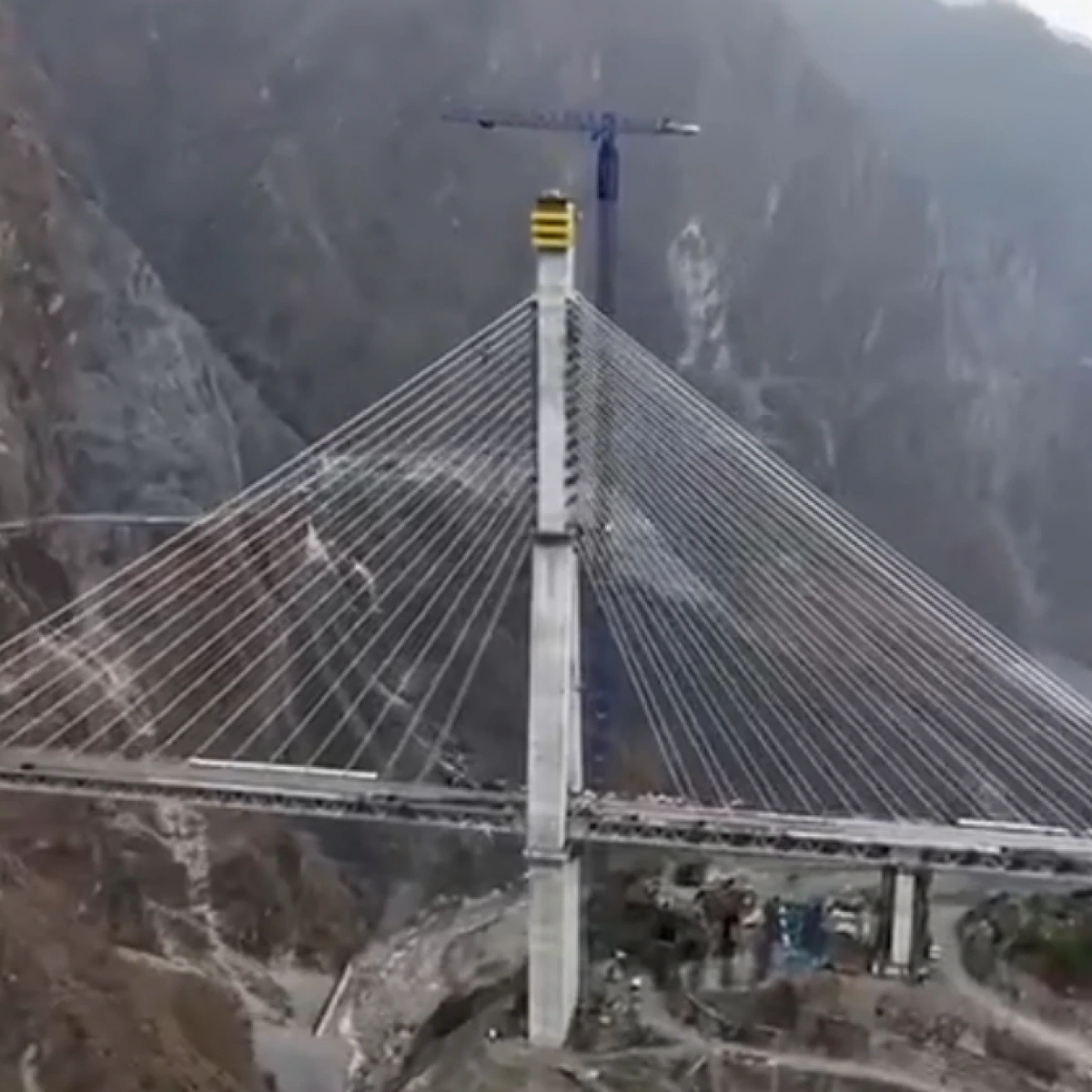

Screengrab from the video
Union Railway Minister Ashwini Vaishnaw today shared a video of the making of India’s first cable-stayed railway bridge which is now ready for use in Jammu and Kashmir. The Anji Khad bridge is supported by 96 cables and the total length of cable strands is 653 km.
The timelapse video was shared with a caption that reads, “In 11 months, India’s first cable-stayed rail bridge is ready. All 96 cables are set! #AnjiKhadBridge PS: Total length of cable strands 653 km”.
Every single cable’s placement, from the first to the last, is seen in the video.
The bridge is constructed in the Reasi district of the Union territory of Jammu and Kashmir under the most challenging Udampur-Srinagar-Baramulla-Rail Link Project of Indian Railways. The site is about 80 kilometres by road from Jammu.
*The total length of the bridge is 725.5 metres, consisting of the main bridge with a length of 473.25 metres, an ancillary viaduct of 120 metres in length, an approach bridge of 38 metres on the Katra end, and the central embankment of 94.25 metres in length.
*The bridge will carry a single railway line plus a 3.75 m-wide service road; there is a 1.5m wide footpath on each side of the deck with an overall width of 15 m.
*The design speed of the line is 100 km/h, a limit that does not pose problems for the train-structure interaction.
*The Anji Khad Bridge has been designed to handle heavy storms with strong winds. The design wind speed considered is 213 kmph.
*This bridge has a single main pylon of 193 metres in height from the top of the foundation, standing at a height of 331 metres above the river bed.
*It is an asymmetrical cable-stayed bridge balanced on the axis of a central pylon. The total deck width of the bridge is 15 metres.
Slopes of the mountain supporting one foundation of the main span have been stabilised by a special hybrid foundation on the Katra end due to space constraints.
The work for Detailed Design and Construction Supervision (DDC) of this iconic bridge was done by the Italian company ITALFERR (a company belonging to the Italian State Railways Group “Ferrovie dello Stato Italiane”), and proof checking was assigned to the company COWI, UK.
Site-specific earthquake parameter studies were carried out by the Department of Earthquake Engineering, Indian Institute of Technology, Roorkee, to define the seismo-tectonic framework for the region.
India's coal imports fell by 7.9 per cent, totalling 243.62 million tonnes (MT), compared to…
At least 88 illegal Bangladeshi migrants have been traced and detained by teams of South…
Japan has accused China of conducting maritime scientific research without prior notification within its exclusive…
Indian businesses are aiming exports to the tune of USD 1 trillion in the current…
Border Security Force (BSF's) Assistant Commandant Neha Bhandari commanded a forward post along the International…
The French Ambassador for the Ocean and French President's Special Envoy for the United Nations…